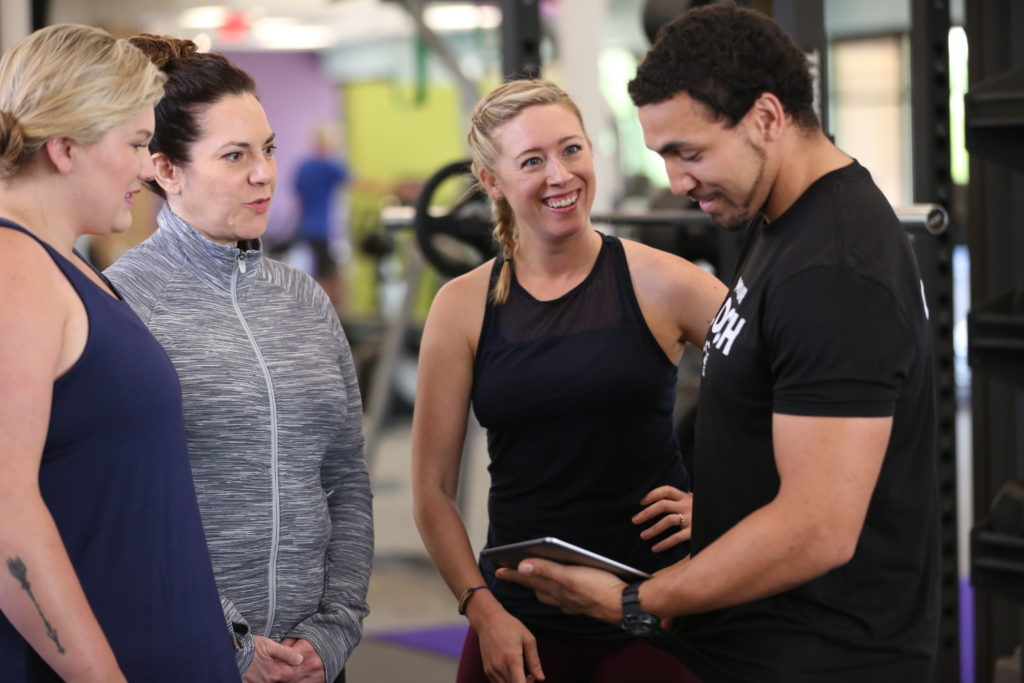If you’ve spent any time in the fitness community, chances are you’ve heard of High Intensity Interval Training, or HIIT. These workouts seem to be taking over the fitness landscape and social media, and there’s plenty of good reasons for their popularity. HIIT training is a fast, mildly addicting, and effective workout that pushes you to your maximum effort. We’ve got all the information on what makes HIIT hot and how you can get in on the action!
What is HIIT, exactly?
High Intensity Interval Training (HIIT) is a workout based primarily on aerobic exercise that can be done just about anywhere and at any time. HIIT isn’t necessarily about the exercise, the equipment, or the workout location. The name gives away the secret to its success — the intensity MUST be high to receive the benefits. In other words, you have to be willing to go harder than you normally do and get a bit uncomfortable.
The good news is, HIIT doesn’t have to be an hour long workout. Most HIIT workouts will only ask you to work or be “uncomfortable” for 10-75 seconds before offering a brief recovery period. Which is totally doable! Most HIIT workouts can last less than 30 minutes and, if done 3 times a week, can produce amazing results.
Who should do HIIT?
HIIT is a perfect solution for busy people as it’s been proven to not only torch calories, but also to enhance your aerobic capacity, without enduring the long, boring workouts that most people fear. The short bursts of intense exercise that make up HIIT sessions can push your body and heart to their maximum capacity, which improves your maximum heart rate and VO2 max (also written as VO2max). You can ask a personal trainer or coach to create a workout for you, or you can try ours below.
If you’re willing to push your limits, HIIT is a great fit for you!
Benefits of HIIT
We love high-intensity interval training, and it has a lot of study-proven benefits. If you’re looking for a reason to try it, you can find tons of information and scientific studies supporting this awesome style of workout! If you have a busy schedule but want to lose body fat, HIIT is an efficient way to put in a lot of hard work in a short amount of time. HIIT is also considered one of the best workouts for managing, and even reducing, high insulin resistance. When your muscles are working hard, they use glucose from the bloodstream, and they also use that glucose to recover after a workout. Glucose is blood sugar, and insulin helps monitor your levels of blood sugar. By repeatedly working your muscles, you help them practice using glucose more efficiently. This can help improve your insulin sensitivity, which in turn improves your insulin resistance!
If losing body fat is one of your goals, this type of training is great for burning fat! One study found that a group of people who performed high-intensity interval workouts three times a week experienced significant fat loss and improved their VO2 MAX (also written as VO2max). Studies have also shown HIIT to be an incredibly effective way to lose fat for people who are overweight or obese.
HIIT has another benefit for people who may be overweight or obese – improving blood pressure. This study, and many other studies, supports that practicing HIIT workouts for several weeks can help with high blood pressure. HIIT helps train your heart and blood vessels to work more efficiently, which is likely why it can help reduce blood pressure. This study found that HIIT can even reduce blood pressure as much as some medications can!
Even if you aren’t worried about fat loss or high blood pressure, there are still lots of benefits of sprint interval training programs like HIIT. Because these workout routines combine short rest periods with high-intensity workouts, you can get an incredible workout in a short period of time. That’s why HIIT can be more effective than workouts of moderate intensity. And as much as we love to exercise, spending less time working out is one of the major benefits of HIIT, especially for busy people with less time for the gym. You can even perform this type of training at home!
HIIT and Strength Training
Can you build muscle mass with HIIT workouts? Absolutely! There’s no reason that HIIT and weight training need to be mutually exclusive. Bodyweight exercises like push-ups are a great way to incorporate strength training into your HIIT workout. Adding lightweight to full-body moves like squats can help challenge you and build muscle mass as well.
However, because HIIT is focused on sprint interval training, it doesn’t pair well with heavy lifting. Because it’s hard to perform multiple reps of heavy lifts in such a short interval, it’s better to stick with lighter weights and faster movements for HIIT training sessions. Heavy lifting is more of an anaerobic exercise, and HIIT’s goal is aerobic activity, so heavy lifting won’t help you increase your VO2 max.
Of course, the most important thing to do when adding weight training to a HIIT routine is listen to your body. Which, by the way, is always a good idea! HIIT is all about reaching your maximum heart rate, and adding weights can really push your body to its limit. If you start to feel lightheaded at any point during the workout, it’s probably best to drop the weights, take a break, and return to bodyweight exercises. We recommend studying how your body responds to HIIT workouts, as the workouts that’s best for you will really depend on your personal information.
29-Minute HIIT Workout
Want to get started? Try this 29-minute HIIT workout next time you head to the gym! You can perform the workout on a treadmill, bike, elliptical or with your favorite exercises (i.e. burpees, jump squats, jumping jacks, etc.). We used the traditional HIIT format for work intervals and rest periods, which is 20 seconds of work followed by ten seconds of rest. During the 20 seconds of work, you want to try to work at your maximum capacity to get the most effective workout. If you’re doing one-sided exercises like lunges, we recommend starting with your right foot forward for 20 seconds, then switching for the next interval. These intervals are too short for you to effectively switch between your left and right foot, so we recommend leading with your right foot – or right side, depending on the exercise – for the full interval.
It’s important to have an exertion scale to monitor how hard you’re working. Sure, the information from heart rate monitors can help but with how fast the intervals come, but it’s better to monitor your breath and your ability to talk to quickly assess if you need to bump it up a notch. And remember, the harder you’re working, the more fat you’re burning! We’ll use four zones to keep it simple:


Preparation & Warm Up
It’s important to properly prepare the heart and lungs for HIIT workouts. Make sure you spend AT LEAST 5 minutes warming up. For example, if you’re on the treadmill, start at a 1% incline and a comfortable walking pace. Gradually, over the next 5 minutes, either increase the incline and speed up the walk or move into a light jog if you’re planning to run for your intervals. If you’re doing a movement like burpees or jump squats, make sure that you practice the movement slowly several times (i.e., regular squats and low-impact burpees) before jumping right into the high intensity training!
Intervals
For each interval section, you will push yourself to breathless for 20 seconds of work and then completely recover for 10 seconds. You’ll repeat this 8 times in a row before rewarding yourself with a big break!
During the 20-second pushes, it’s important to get to it right away. For example, if you’re on the treadmill, be on the verge of uncomfortable before the buzzer sounds and quickly increase the pace or the incline (or both) to reach breathless. Then, when you recover, move to the treadmill rails (off the belt) and breathe. You may not get fully recovered as the intervals progress during the set, but that’s the point. Your body will respond to the increased discomfort.
Recovery
In between the intervals sets, you should recover as completely as you can during the first three minutes. Walk around, grab a drink of water, rehearse the next movement. The main point is to bring your heart rate down as much as possible before beginning the next cycle of intervals. This will help you build up your VO2max (also written as VO2max) once you start moving again! Then, as you head towards the next round of intervals, gently start moving back towards being challenged to be ready for the next push.
Stretch
Make sure you take a few minutes to stretch your major muscle groups at the end of the workout. And, of course, be certain to take off a day in between HIIT workouts to give your body an opportunity to recover. We recommend studying how your body responds to HIIT workouts to find out the best rhythm for you!



